My Life in WordsTips, travel, yoga, mentoring, life, and everything in between.
|
|
|
1/13/2016 0 Comments Thyroidism - Hypo/HyperDecember 2015 This blog is dedicated for those who suffer from Hypothyroidism and Hyperthyroidism. What is it? How does yoga help? I'm currently in Jamaica teaching yoga at retreat on the most eastern side of the island. Just recently we had a guest, who suffered from hypothyroidism. She was of Indian descent, early 40's, vibrant personality, well traveled (alone for that matter), and came to spend 9 days at the retreat. The first few days we did Yin yoga with a few other guests but as everyone left, she was the only at the retreat, so essentially she had personal care and private yoga sessions. She had gained weight in the waist area and wanted to get back into the swing of things increasing her metabolism, as well as getting back into her regular yoga practice. So, I had asked her if she would be my case study in regards to thyroidism and she was inclined. Ok so what is Hypo/Hyper? What is the difference between the two let alone knowing what the thyroid gland is and it's functionality? The thyroid is a butterfly shaped gland that sits low in the throat, in front of the windpipe and just below the Adam's apple. The thyroid is apart of the endocrine system, a series of glands that produce hormones that regulate metabolism, growth and development, tissues, sexual energy, reproduction, sleep cycle, and moods. Each gland produces X amount of hormones that send and deliver messages to produce particular hormones for a function and/or multiple functions. In this blog, we are solely focusing on the thyroid, it's operational system of what is produced, how it's effecting the body and learning ways through yoga, to counter act when the thyroid fails to do it's work properly. I'm not going to really tap into the parathyroid function as it's not entirely conducive to the topic though relative. Keep in mind, I'm writing this blog for anyone and everyone to understand in the most generic terms who may be suffering from Thyroidism, and what are some of the ways to work with it, essentially to get the motor running smoothly again. The main hormones that are secreted are the Triiodothyronine - T3 hormone and Thyroxine - T4. The thyroid first extracts iodine from food intake, combines it with a non essential amino acid called Tyrosine to synthesize the protein and thus, producing these two particular hormones. T3 and T4 then travels throughout the blood stream to regulate the metabolism. Hypothyroidism - Slow Metabolism - Lack of T3/T4
No Fun. :-( Hyperthyroidism - Fast Metabolism - Increased T3/T4
Again...... No fun. :-( Here's where the hypothalamus comes into play. Though the pituitary gland monitors the thyroid, it's the hypothalamus who sends messages to the pituitary to regulate the thyroid if it's under active or over active. The hypothalamus will release the Thyroid Stimulating Hormone to the pituitary which will then activate the thyroid to manufacture more or less of the T3 and T4 if it's inconsistent. It's like when air traffic control informs pilots in an airplane they are cleared for the approach. The pilots then configure the airplane for landing. Although the thyroid is working regardless, the hypothalamus is the one to signal. Somewhat the easiest analogy I could come up with, hopefully you get the idea. How does yoga help? Yoga is a science, and your body is a study. Here are some postures that have been known in the yoga world to stimulate the thyroid and combat any dis-ease in the body in regards particularly to thyroidism. Keep in mind, with the extensive research I have done, along with the case study, I have not seen any proven 100% guarantee or money back solidifying evidence that these postures, along with pranayama has completely cured thyroidism. I cannot stress enough, each person is case by case and it's up to the practitioner to take the initiative of doing their due diligence in combating this ailment by monitoring their progressions and of course, effort. It requires dedication to see results. With personal practice of mine, I have noticed with certain postures, such as the shoulder stand, it has decreased the excess skin around my waist with toning and provided me with fresh blood to the head, which felt invigorating. However, I have had some students who do not feel comfortable in shoulder stand, and have rather felt it does not help, and also I have read some controversy of it leading to a stroke. I'm not here to debate either or sell you on my conviction, it's up to you to rectify what you think works in your position should you ever battle thyroidism, this is just case study, practice, research, discussing, and alternative avenues to taking (or along with) western medication. I believe, combined with some western medicine and daily routine of yoga, along with breathing and eating right,a person would be able to alleviate such dis-ease as thyroidism. I say dis-ease because it is construed with symptoms, and signs of various ailments or matters of the body relating to pathology. So if you see symptoms in ailments, your body is un - easing, it's not comfortable. Ok so here are some poses that have been regularly assigned to such a topic, and of course you can add other postures that are beneficial to you as a sequence. Here's the thing to look for, you will read some poses are for both hypo and hyper. Some 'experts' may say I'm completely wrong, while others will agree. You will also read some poses are only for hypo and/or only for hyper. I'm listing all and making well rounded. Decipher for yourself my friends. After all it is your body. Sarvangasana - Shoulder Stand - Chin lock, fresh blood Contraindications - Menstruation, Headaches, Neck Injuries, High Blood Pressure Halasana - Plow Pose - Chin lock stimulates the thyroid Contraindications - Menstruation, Pregnancy, Neck Injuries Setu Bandhasana - Bridge Pose - Chin lock stimulates the thyroid Contraindications - Neck Injuries, Pregnancy, Severe Knee Injury Pada Hastasana or Uttanasna - Forward fold - Chin lock, inversion Contraindications - Neck Injury, Leg or Knee Injury, Shoulder and Back Injury. Paschimottanasana - Seated forward fold - Chin lock Contraindications - Diarrhea, Asthma, Hamstring Injury, Back Injury (Herniated disc), Enlarged Spleen or Liver. Viparita Karani - Legs Against the wall - reverse flow of blood to the thyroid and pituitary gland. Restorative pose. Contraindications - Herniated Disc, Glaucoma, Hypertension. Bhujangasana - Cobra Pose - Stimulates thyroid Contraindications - Spinal Injury, Pregnancy, Carpal Tunnel Urdhva Danurasana or Chakrasana - Upward facing bow/wheel - Stimulates thyroid, invigorating (preferably for slow pace - hypothyroidism) Contraindications - Headache, Carpal Tunnel, Back and Spinal Injury, Heart Issues, Diarrhea Dhanurasana - Bow pose - Stimulates thyroid, invigorating gets heart pumping (preferably for hypothyroidism) Contraindications - Hernia, Intestine Problems, Pregnancy Ustrasana - Camel Pose - Stimulates thyroid Contraindications - Neck and/or Back Injuries, High or Low Blood Pressure Matsyasana - Fish Pose - Stimulates the Thyroid, Parathyroid, Alleviates Respiratory Issues Contraindications - Neck Injury, High or Low Blood Pressure, Migraines and Insomnia Bhramari Breathing - Humming Bee Breathing - Vibrations tickle and stimulate the thyroid Contraindications - None Ujjayi Breathing - Stimulation of Thyroid Contraindications - Cardiac Issues If you have weight gain, twisting poses are excellent for reducing size in waist, plenty of poses to look into for that. If you want to know, just email me or comment below and I'd be happy to suggest. (Updated January 2016, San Diego for publishing) One Love, Desiree aka Traveling Yoginista
0 Comments
|
Author -
|

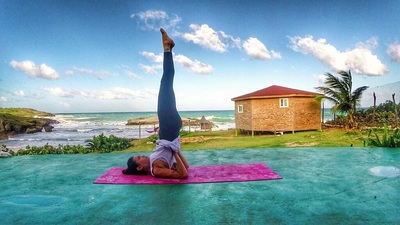

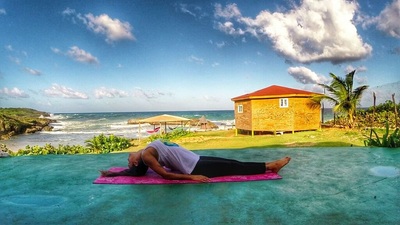

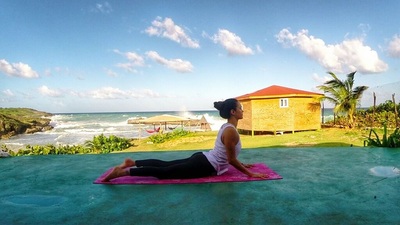

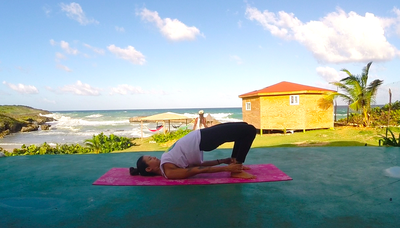
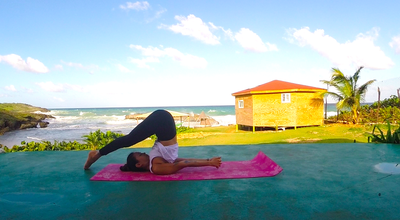

 RSS Feed
RSS Feed
